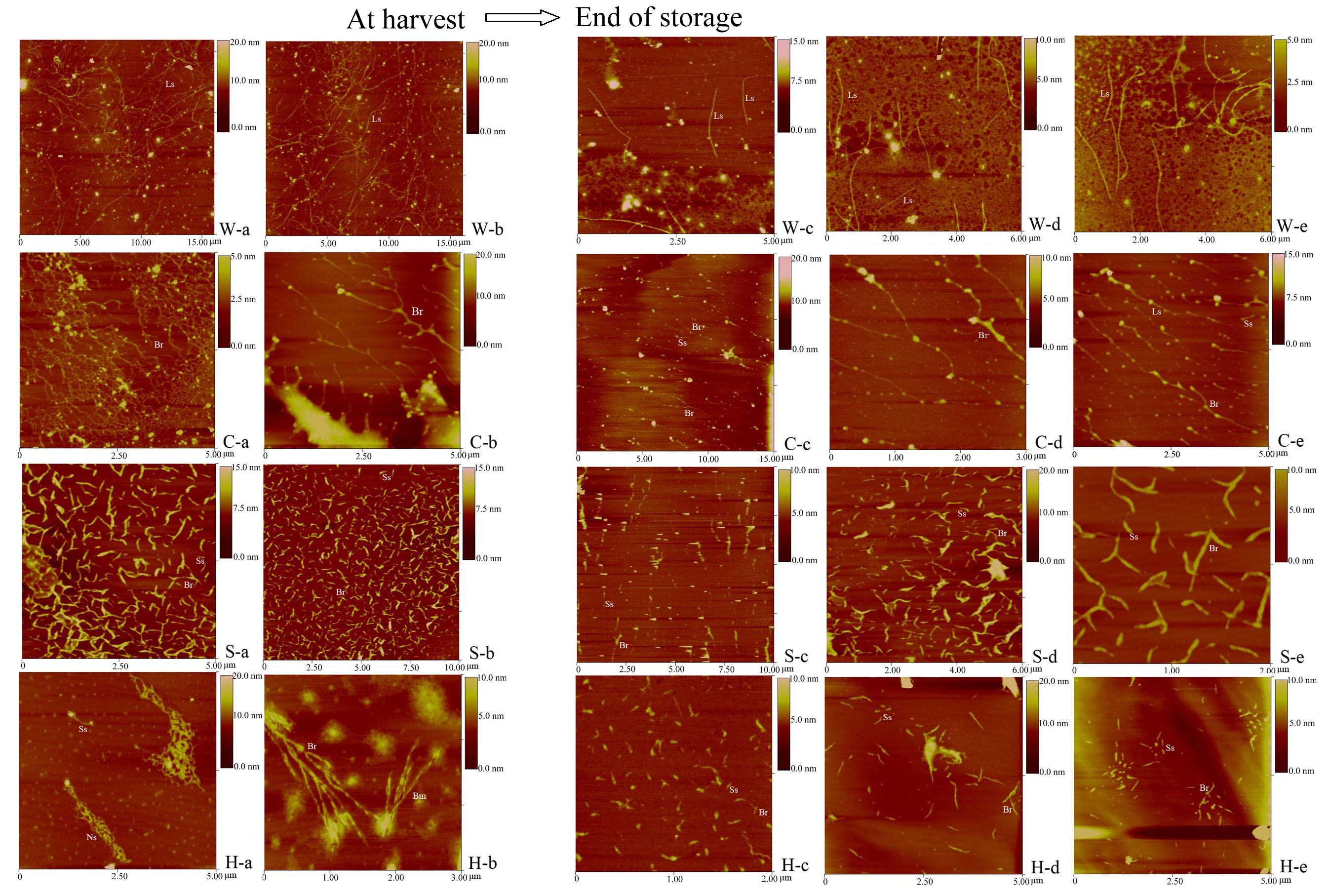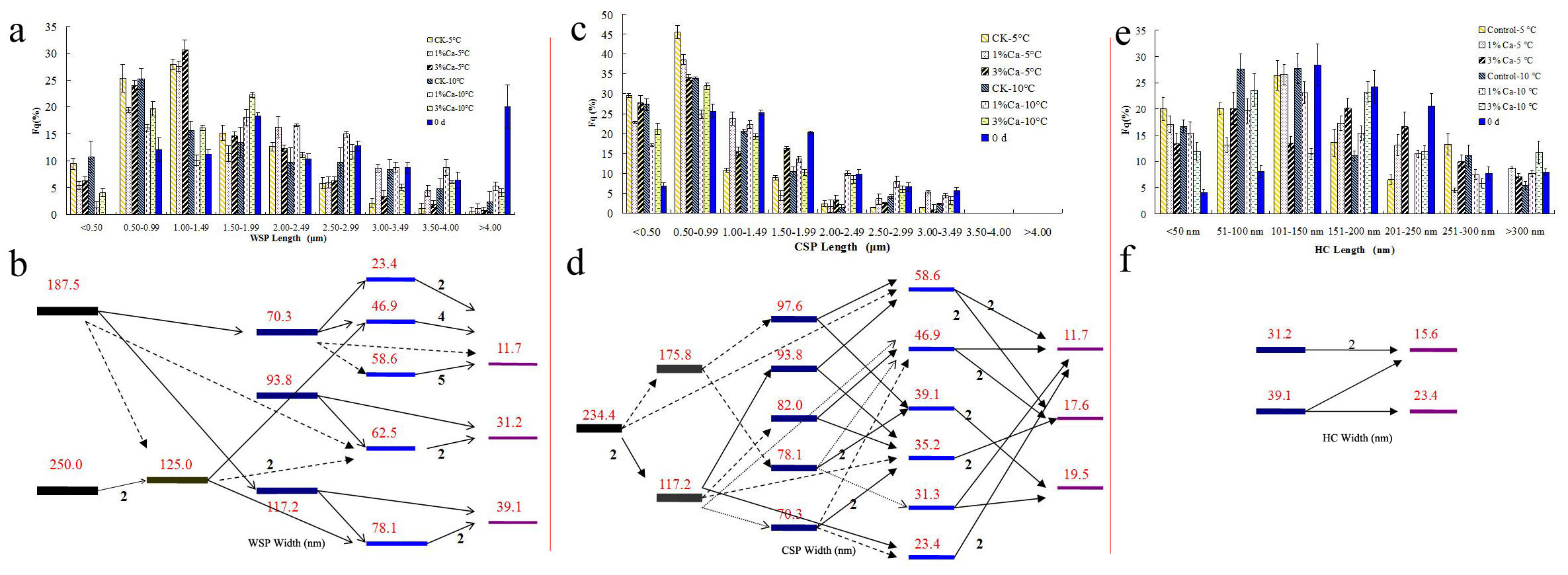An important research progress which described cell wall polysaccharide nanostructures and quality of postharvest apricot during cold storage was achieved by the Department of Fruit Processing and Storage at the Zhengzhou Fruit Research Institute and published in Food Chemistry in January, 2017. The paper investigated the nanostructure and characterization of cell wall polysaccharides, analyzed the quantitative results and induced the degradation pathway of pectin chains during the fruit softening. The detailed mechanism may be of interest for future fruit texture properties and postharvest storage research.
The texture of fruit is a key quality parameter that affects consumer preference. Texture affects postharvest handling, microbial safety, shelf life, consumer acceptability and suitability for further processing. The composition, structure and morphology of the fruit cell wall have been viewed as the most important factors to influence texture. Due to the apparent irregular behavior of polysaccharide polymers, the dismantling processes related to the fruit softening have not yet been fully elucidated.

The atomic force microscope (AFM) has been allowed for characterization of the cell wall pectins and hemicellulose, in conditions that simulate their depolymerisation and solubilisation in natural state at microscopic level when the fruits were softening. There were marked differences among the morphological properties of WSP, CSP, SSP and HC chains in apricot flesh as detected by AFM. WSP were long straight chains without branches or aggregations. SSP chains had relatively shorter fragments. CSP and HC had abundant and complex branches at harvest, but fewer branches were found at the end of storage, which indicated the debranching and depolymerisation of the chains. The quantitative analyses of the length and width distributions of cell wall polysaccharide chains throughout the storage period were also measured. The frequency value of longer chains and wider chains was significantly reduced at the end of storage, when the frequency of short chains was higher. The results also showed the pectin polysaccharides underwent degradation. The basic units of WSP, CSP and HC were developed and schematic models were deduced for the degradation pathway of cell wall polysaccharides from their characteristic width values.

The effects of different concentrate of calcium treatment and storage temperature on the quality and cell wall polysaccharide nanostructure were investigated. And the results showed 1% Ca followed by cold storage at 5℃could maintain firmer texture and reduce the degradation of cell wall polysaccharide chains, which could be a prefer choice for apricot postharvest treatment and storage.
By Liu Hui
E-mail: liuhui@caas.cn
